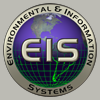
|
Pete Brodsky Principal Engineer brodsky@apl.washington.edu Phone 206-543-4216 |
Research Interests
Autonomous and Manned Vehicle Command and Control, Underwater Navigation, Digital Signal and Image Processing
Biosketch
Peter Brodsky develops command and control software for Autonomous Underwater Vehicles (AUVs). In support of this discipline, he also writes tools for AUV flight prediction, simulation, and underwater navigation. At least five different AUVs are now in his repertoire, of both the propeller and buoyancy-driven varieties. In addition, Mr. Brodsky supports projects in the areas of acoustic simulation, ocean property estimation, and image-processing and automatic target recognition. Two and three dimensional graphical displays of geometric data are another field of expertise. A former Merchant Marine officer, Mr. Brodsky has extensive seagoing experience. He has over 20 years developing scientific and realtime control software on a variety of desktop and embedded systems. Mr. Brodsky joined the Laboratory's Environmental and Information Systems Department in 1999.
Education
B.S. Oceanography & Meteorology, SUNY Maritime College, 1982
M.S. Applied Mathematics, Johns Hopkins University, 1989
Projects
|
XRay Flying Wing Glider The XRay glider is a newly designed, high-performance undersea robotic vehicle developed in partnership with the Marine Physical Lab at Scripps Institution of Oceanography. |
More Info |
|
|||||||
|
The XRay glider employs a high lift-to-drag ratio wing design allowing it to travel long distances efficiently, to travel at higher speeds than existing oceanographic profling gliders (e.g., Seaglider, Slocum and Spray), and to carry tactically relevant sensors. These attributes make XRay suitable for surveillance and other remote sensing applications of interest to the U.S. Navy. In July%u2013September 2006, the XRay glider participated in its first at-sea test experiments in Monterey Bay. |
|||||||||
Videos
|
Electronic Monitoring for Fisheries: Autonmated Fish Measurement System APL-UW researchers developed an automated system to determine fish size quickly, in situ, and without human intervention, using an off-the-shelf security camera and custom machine vision software. Mounted on a fishing vessel's discard chute, the system measures the size of every halibut that is inadvertently caught moments before it is returned to the sea. The system speeds the required measurements, reduces the time halibut are out of the water, and thereby reduces mortality. |
4 Dec 2017
|
|
Publications |
2000-present and while at APL-UW |
Acoustic sensor systems on a flying wing underwater glider and two prop-driven autonomous underwater vehicles D'Spain, G., R. Zimmerman, S.A. Jenkins, D.B. Rimington, J.C. Luby, and P. Brodsky, "Acoustic sensor systems on a flying wing underwater glider and two prop-driven autonomous underwater vehicles," J. Acoust. Soc. Am., 123, 3007, doi:10.1121/1.2932590, 2008. |
More Info |
1 May 2008 |
|||||||
|
The Marine Physical Laboratory, Scripps Institution of Oceanography operates several underwater vehicles including an autonomous underwater glider based on a flying wing design and two prop-driven autonomous underwater vehicles (AUV) manufactured by Bluefin Robotics. The objective of this presentation is to describe the acoustic sensor systems on these platforms and provide sample results from the at-sea data. The glider, with a 6.1-m wing span, was developed jointly by the Marine Physical Lab and the Applied Physics Laboratory, University of Washington. It is designed to maximize the horizontal distance traveled between changes in buoyancy (i.e., maximize its "finesse") while quietly listening to sounds in the ocean. A 27-element hydrophone array with 5 kHz per channel bandwidth is located in the sonar dome all along the wing's leading edge. In addition, it has a four-component acoustic vector sensor in its nose. The two prop-driven AUVs have been equipped with hull-mounted hydrophone arrays with 10 kHz bandwidth for passive synthetic aperture studies, an acoustic vector sensor, and active acoustic imaging systems for ocean bottom-subbottom mapping. Results from the data processing illustrate the tight coupling between acoustic sensor systems, signal array processing methods, and vehicle behavior. |
|||||||||
Underwater acoustic measurements with a flying wing glider D'Spain, G.L., R. Zimmerman, S.A. Jenkins, J.C. Luby, and P. Brodsky, "Underwater acoustic measurements with a flying wing glider," J. Acoust. Soc. Am., 121, 3107, 2007. |
More Info |
1 May 2007 |
|||||||
|
Liberdade, a new class of underwater glider based on a flying wing design, has been under development for the past 3 years in a joint project between the Marine Physical Laboratory, Scripps Institution of Oceanography and the Applied Physics Laboratory, University of Washington. This hydrodynamically efficient design maximizes the horizontal distance traveled between changes in buoyancy, thereby minimizing average power consumed in horizontal transport to achieve "persistence." The first fully autonomous glider of this class, "XRay," was deployed and operated successfully in the Monterey Bay 2006 experiment. Communications, including real-time glider status reports, were accomplished using an underwater acoustic modem as well as with an Iridium satellite system while on the surface. The payload included hydrophone array, with 10 kHz per channel bandwidth, located in a sonar dome along the leading edge of the 6.1-m-span wing. Narrowband tones from 3.0 to 8.5 kHz were transmitted from a ship-deployed controlled underwater source. During the glider's flight, lift-to-drag ratios (equal to the inverse of the glide slope) exceeded 10/1. However, specific flight behaviors that deviated from this efficient horizontal transport mode allowed for improved detection and localization by the hydrophone array. |
|||||||||
Innovative 3D Visualization of Electro-optic Data for Mine Countermeasures Brodsky, P.M., J.C. Luby, and J.I. Olsonbaker, "Innovative 3D Visualization of Electro-optic Data for Mine Countermeasures," APL-UW TR 0401, March 2004. |
30 Mar 2004 |
In The News
|
UW and local company unveil new five-person submarine UW News and Information, Hannah Hickey The University of Washington's Applied Physics Laboratory and Everett-based company OceanGate this month unveiled the first model of its joint project to build a new type of submarine for human research and exploration in the deep sea. |
20 Mar 2015
|






